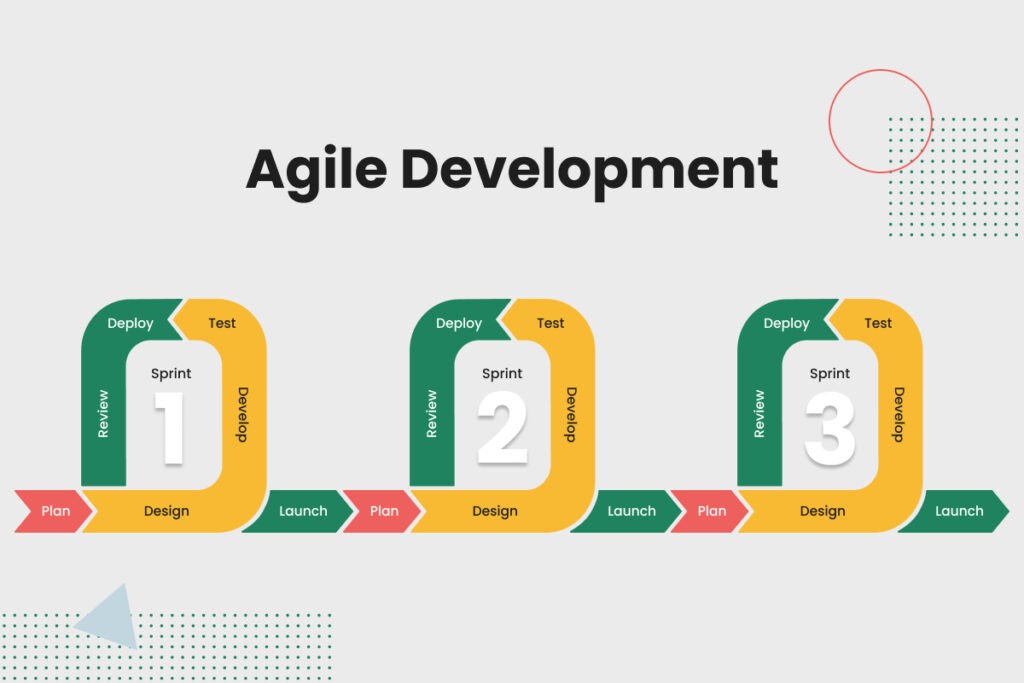“Finished” = Dead: Why An Iterative Design Process Means Your Product Will Never Die
UI/UX Design
User Research
Software is a living thing that must evolve to survive. That means that once you commit to a software development project. Whether that’s for a traditional desktop program or a mobile app, you are in many ways committing to a long lifecycle of support and updates. An ongoing iterative design process. What happens if you doggedly pursue ‘launch’ and treat it as an end goal? You’ll get to watch as your once successful app/program begins to lose users at an exponential rate. Why is it, then, that many managers approach a software project as a one-stop solution that is ‘done’ once the product is live? Why are so many teams left in the lurch with an unwieldy product that an agency has built and then they’ve taken control of - only to be unable to update it or add value? It all comes down to understanding your users and adopting an iterative design process/mindset. As we’ve discussed time and time again, user research is the crux of a successful digital product. It helps shape the early direction of the project and what the ‘minimum viable product’ will be when launched. The majority of design thinking and UX research practices focus on the initial build of a product rather than after its release. But that’s a crucial error. Iterative design processes treat research as an input to make changes. Gathering user research throughout your product’s entire lifecycle helps user-centric thinking. Refining the product’s future once it’s in their hands, rather than concentrating solely on its immediate release. Great research principles and a UX design mentality futureproof your product in two ways:
By bringing these principles into the pre-launch period to make the product as useful as possible to user requirements.
By establishing this approach as a mentality and outlook going forward. So, any post-launch activity is viewed through the lens of user needs rather than ‘ticking a box’.
So how do you ensure you’re looking past the minimum viable product or MVP? What sort of practices will help futureproof your product and keep it ‘alive’ in the changing world we live in?
User research sets the post-launch stage

Before a product is launched, you only have information on how users will interact with it comes from limited testing and user research. Post-launch, you’ll suddenly have a far deeper understanding of how your product is performing. From error logs to general analytics and usage metrics. You get crucial data-driven insight into users and how they interact with your product. Let’s remember something vital: you can’t just plough through a project without doing research and UX design, and then expect to use real usage data to reshape the product. User research is a long-term approach. It ensures your MVP is good enough to engage users from the beginning. Otherwise, you’ll find you don’t have user data because you don’t have users. All great iterative design processes make decisions based on user research data rather than on assumptions.
Design to encourage feedback

In addition to the metric-driven data your product can begin to gather post-launch, you can also actively encourage real feedback by planning it into your pre-launch design sprints. Use research and UX skills to create experiences that you know your users will enjoy. Then, use this to encourage the submission of feedback.
Feedback in action
When we were faced with the tough challenge of creating a feedback system within an app meant for severely ill patients, we had to plan from an early stage. We conducted user research to ascertain how our users might interact and found that they were understandably prone to ‘negative’ feedback due to their condition. This meant we had to redesign the feedback system based on a scoring matrix to be able to collect useful data for the trial’s efficiency. Don’t hide your feedback prompts or buttons somewhere users aren’t going to see them. Design them in a way that complements the experience and encourages a user to submit their feelings and ideas. Then, crucially, plan changes based on the feedback rather than simply updating for mechanical reasons such as a new Android/iOS update. Finally, the Aesthetic Usability Effect can work in your favour. If you’ve done user research pre-launch, you should be able to design a more ‘pleasing’ design as you know what users enjoy. In turn, users are more likely to perceive your product as usable. They’re more likely to engage with it positively.
Agile methodology is an ongoing mentality
When people ask ‘what is an iterative design process?’ we can use Agile as an example. Agile is the preferred working model for most software development businesses, as it allows a more responsive and flexible work pattern that has a defined output and approach. Working in ‘sprints’ means that there’s no real ‘end-date’ for a product - only a series of iterative phases that each contains a post-completion ‘learning’ phase.

The nature of sprint-based work means teams are constantly focused on the lifecycle of the product rather than the ‘end’. The culmination of each sprint is only a checkpoint before something else comes into motion. Adopting this mentality at a product level means understanding that your product is never finished. Even if it is ‘perfect’ at launch, changes in users, markets and technology will either render it obsolete or provide an opportunity to add value. Many businesses assume that they lack the resources needed to maintain a post-launch product. But remember, even minimal changes will help keep your product alive. It’s only when you sit still and stop working on it completely that you’ll see it fail. Not every team has the resource or need to continually add value to their product post-launch. However, every team should invest in enough ongoing activity to keep their product usable once it’s in a user’s hands.
Market influence has (some) impact
As long as you understand the ‘voice of the customer’, you have some level of robustness against market change. By building out real user personas and journeys, your product exists for that specific audience, rather than for a general portion of a market. If tastes within the market change, your users will still want to use your product. But this change, even if you’ve got users who can ignore it, must be accounted for. You can’t just launch a product, watch it meet user expectations and then abandon it. What if, for example, the market shifts towards a new platform - such as when Android came to prominence after years of iOS dominance. Does that impact your app? Do you need to update it to stabilise performance? Or do you need to go even further and make changes that add value?

Even the very fields of UI and UX design are changing the market. As customers come to experience better UX and UI practices in their apps, they’re less tolerant of bad design. 70% of mobile shoppers abandon carts due to bad UX. You need to invest in continual refinement even just to stay ahead of your competitors’ UX teams.
Iterating from an MVP over ‘launching’ your product
The final note here is that the correct design approach to a project is to consider the MVP the first ‘goal’ - but to recognise that it’s only the first stage of the process. Your MVP is what allows you to start gathering data and feedback so you can continually improve. A ‘finished product’ launch would be a static thing. Even the most well-researched product will need to be updated to stay relevant. The product process is never ‘over’. By embedding design thinking and user research into your team, you’ll recognise the value of continual iterations based on user data and feedback. Even if you don’t think you have the resource to invest in iteration, you need to consider how your product will thrive in a post-launch environment before committing to any actual build. By scaling things back through a UX lens, you may find that you can release an MVP on a more affordable timeline and then use extra budget. With the added bonus of any generated revenue from the product to invest in ongoing iteration. If you’d like to prevent your app or software product from being declared dead on arrival, contact KOMODO today. See how our team’s iterative design process and Refinement Track can benefit your product long past launch.

Got an idea? Let us know.
Discover how Komodo Digital can turn your concept into reality. Contact us today to explore the possibilities and unleash the potential of your idea.

Sign up to our newsletter
Be the first to hear about our events, industry insights and what’s going on at Komodo. We promise we’ll respect your inbox and only send you stuff we’d actually read ourselves.






